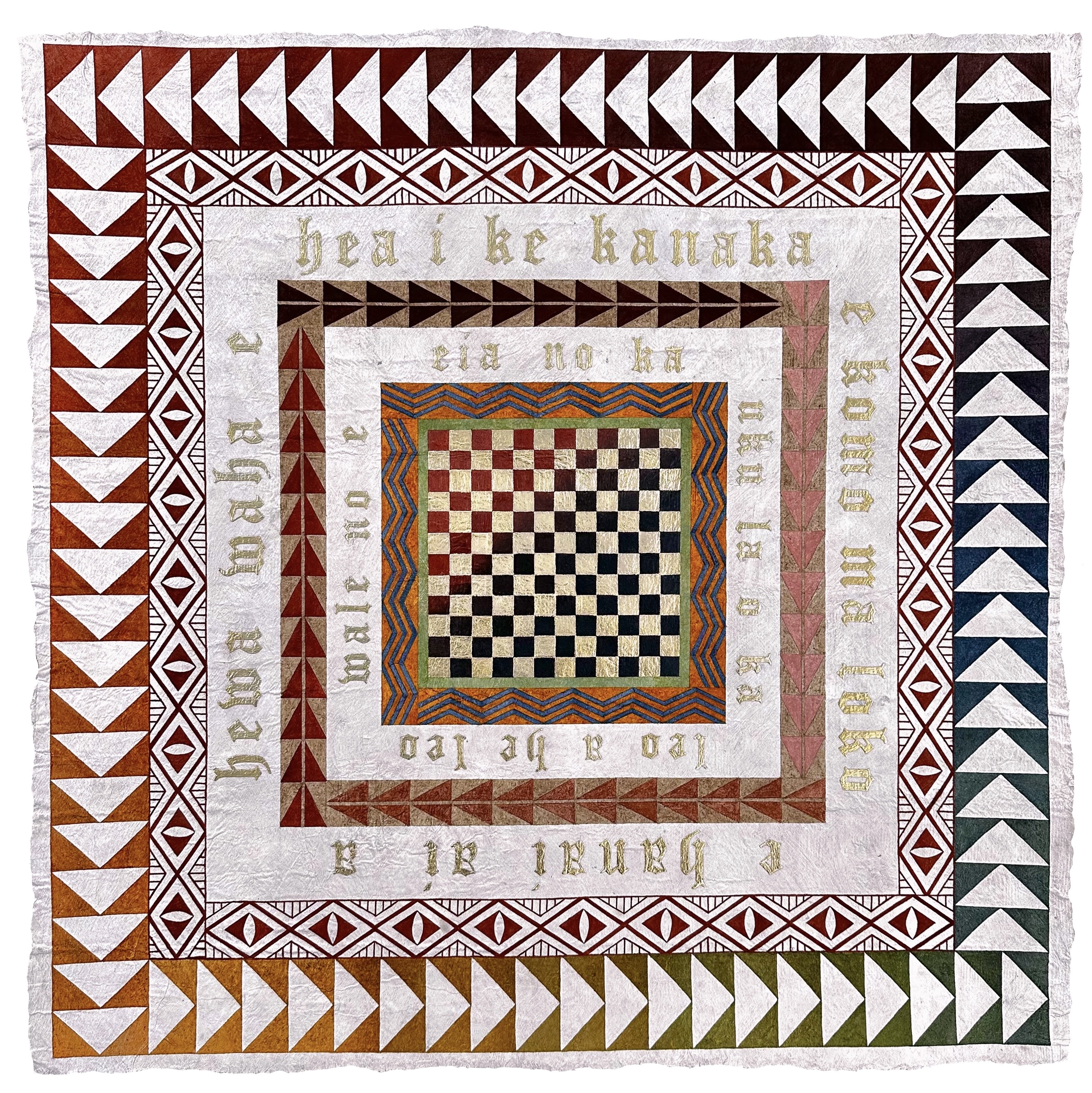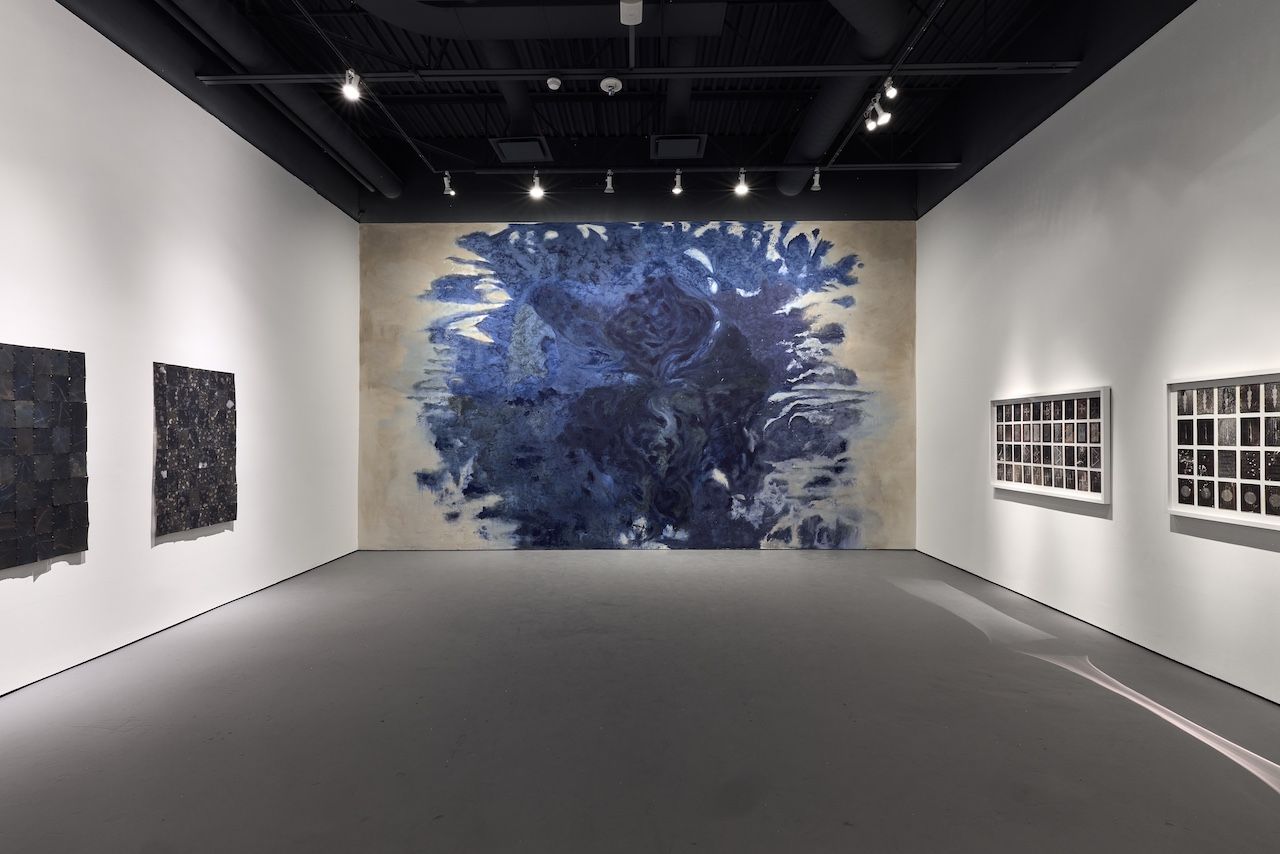 Lehuakuea, Puka Komo ‘Ekahi: Portal to Grant Permission, 2024. Earth pigments hand-painted on kapa. Courtesy the artist. Photo: Lehuakuea
Lehuakuea, Puka Komo ‘Ekahi: Portal to Grant Permission, 2024. Earth pigments hand-painted on kapa. Courtesy the artist. Photo: LehuakueaKincentric Ecologies presents the work of Indigenous artists who work harmoniously within the natural environment, often using traditional techniques. Framing ecological interactions as relational rather than extractive, Kincentric Ecologies stands as a point of contrast to otherwise exclusionary “eco-art” and “land art” movements. The exhibition at 516 Arts brings to light local environmental issues through the lens of Indigenous artists, honoring the historical relationship between land and culture.
The project began with two New Mexico–based artists: Leah Mata Fragua (Northern Chumash) and Michael Namingha (Ohkay Owingeh/Hopi). For years Fragua’s primary medium was abalone, but climate change and subsequent regulatory restrictions led her to shift to papermaking and sculpture. Fragua’s work will be in conversation with works by Namingha, a photographer who documents environmental change and the impacts of resource extraction, and mounts his photographs on shaped acrylic utilizing a photo-screenprinting sand process to evoke pottery fragments that have been pieced together. The project will also feature works by Ian Kuali’i (Kanaka Maoli/Mescalero Apache descent), Lehuaukea (Kanaka Maoli), Mikayla Patton (Oglala Lakota), and Porifirio Gutierrez (Zapotec-American), whose artistic practices are rooted outside of New Mexico but overlap with regional concerns. Ortiz will also include work by Dakota Mace (Diné) and Margarita Paz-Pedro (Laguna Pueblo).
Ortiz’s curatorial research is informed by Native scholars with deep ties to New Mexico’s Indigenous communities. Public programs will be developed in collaboration with Pueblo Action Alliance and the Land Based Learning program at Native American Community Academy.
 Michael Namingha, Yupkovi, 2023. Acrylic and enamel ink silk screen with acetate powder and hand-applied soil in a shaped panel. Commissioned by The Metropolitan Museum of Art. Courtesy the artist
Michael Namingha, Yupkovi, 2023. Acrylic and enamel ink silk screen with acetate powder and hand-applied soil in a shaped panel. Commissioned by The Metropolitan Museum of Art. Courtesy the artist Dakota Mace, Hadootł’izh (Blue Area), 2024. Installation view in SITE Santa Fe, February 28, 2025–May 19, 2025. Courtesy Brad Trone. Photo: Brad Trone
Dakota Mace, Hadootł’izh (Blue Area), 2024. Installation view in SITE Santa Fe, February 28, 2025–May 19, 2025. Courtesy Brad Trone. Photo: Brad Trone